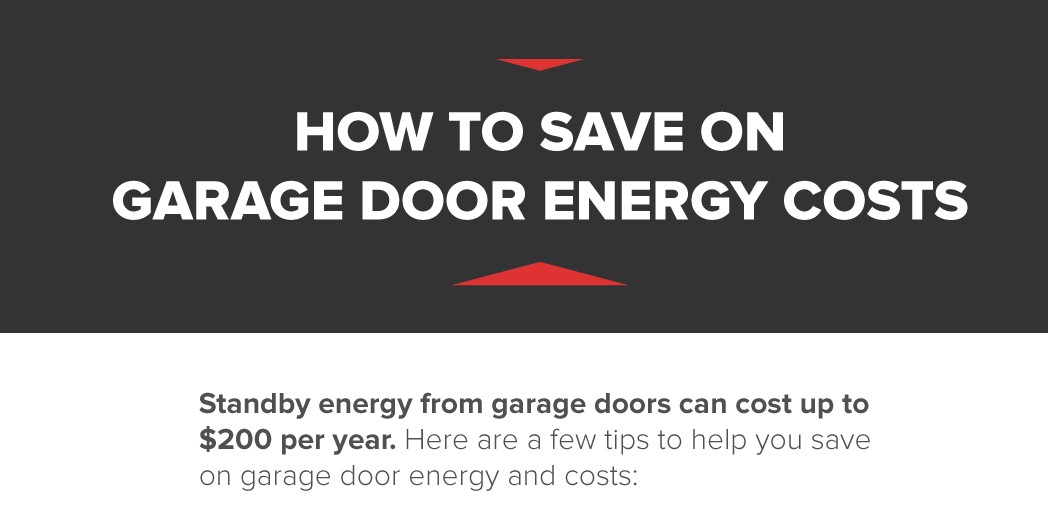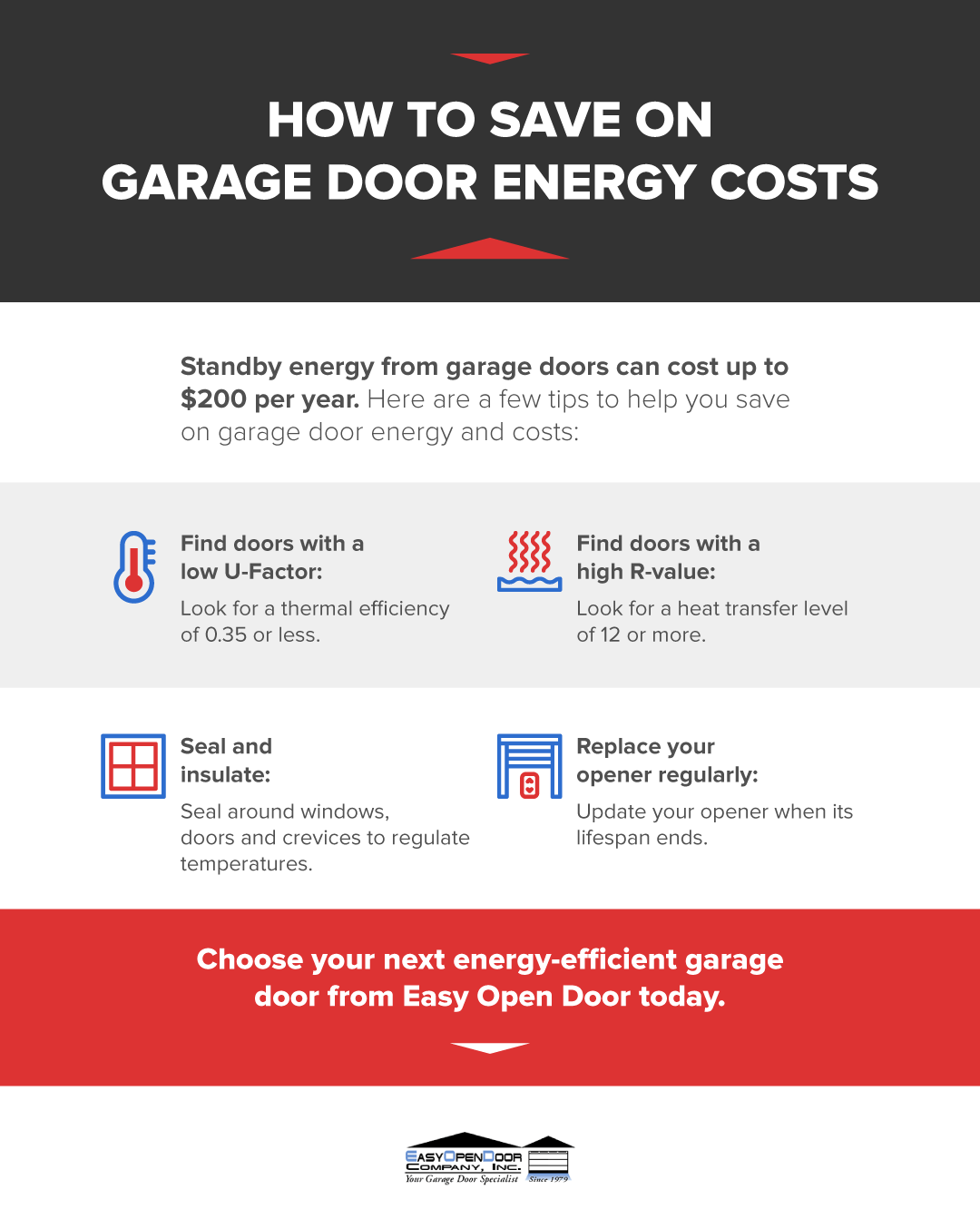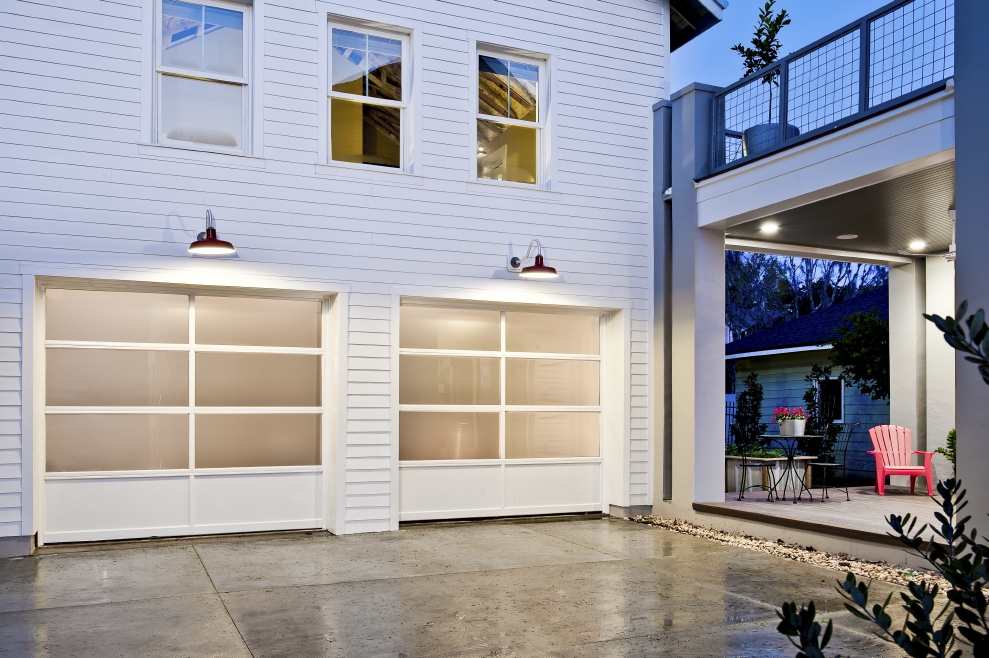Table of Contents
How a New Garage Door Can Help Save on Energy Costs
Have a single or multi-vehicle garage? You probably also have an automatic garage door. Garage doors that activate based on remote control have become fairly standard. These doors eliminate the need to open and close the door manually. They also raise questions about the energy needed to operate a garage door opener unit.
If you have questions about energy costs and garage doors, read on for more information.

How Much Energy Do Garage Doors Use?
Most of the time, you use your garage door opener unit only a few times each day. You might open your garage door in the morning to leave for work and at night when you come home. The opener unit uses electricity to move the door up and down safely and securely.
The opener unit also uses energy at other times of day, even when it is not moving. It must be prepared to spring into action when it receives the proper radio signal from the opening device. As it waits for the signal, the opener unit draws small amounts of energy. This energy, sometimes called a “phantom load” or “vampire draw,” may not be noticeable on a day-to-day basis, but it can add up over months and years.
Other household appliances have phantom loads as well. For example, a laptop or phone charger in standby mode slowly uses up energy. When plugged into an active outlet, any charger will require energy. Even a few watts a day can add up on your annual utility bill.
However, the truth is that vampire draws on garage door opener units are fairly negligible. Plus, newer garage door models ensure improved energy efficiency, especially in areas with mild climates.
San Diego Climate: Does It Really Matter When It Comes to Garage Door Energy?
In states and areas with harsh, cold winters, temperature fluctuations can affect the energy costs of having a garage door. The garage door opener unit will not necessarily use more energy in places with freezing weather. However, the type of garage door will impact the amount of energy used.
Garage doors with superior insulation are always preferable, even in places like San Diego and other parts of Southern California. Proactive weatherstripping and garage doors made of energy efficient materials help keep wind from entering the garage. Many garages are attached to the house — in these cases, the garage will help ensure that the outside temperature and weather do not constantly affect the interior of the home.
To decrease the likelihood of a super-hot or super-cold garage causing temperature fluctuations inside the home, homeowners should make sure the entry from the garage into the house is sealed off. If there are rooms located above the garage and garage door, the ceiling of the garage should be well insulated against leaks.
How to Save on Garage Door Energy Costs
Whether you want to save energy costs in general or focus on saving on your new garage door investment, you can ease your utility bills by taking these three steps.
1. Choose Doors With a Low U-Factor and High R-Value
First, look for doors with a low U-Factor of 0.35 or less. The U-Factor tests how quickly heat moves through an object, such as a garage door or a window. The U-Factor measures thermal efficiency, so it remains an important factor for any homeowner looking at garage doors. Every aspect of the garage door is measured during U-Factor testing, not just one of the components. Your U-Factor result provides a great snapshot of how effective your garage door will be.
Be sure to also ask for a garage door with a high R-Value of 12 or more. The R-Value works hand-in-hand with the U-Factor, as it measures how well a single part of the garage door will resist the transfer of heat. Taken together, a low U-Factor and high R-Value provide the most value.
2. Invest in Garage Door Insulation and Seal All Crevices
Be aware that not all garage door installers focus on insulating the area. Insulation is a must-have to avoid using up energy unnecessarily. As you consider insulation options, remember that you should seal around the doors, windows and crevices throughout the garage.
The more sealed the garage, the better for all-around energy efficiency. The garage will still get hot when the outside temperature is hot, but the sealing will help the garage stay at a steady temperature and protect the house from temperature fluctuations.
3. Replace the Opener on a Regular Basis
To reduce the amount of energy that your garage door opener unit requires, replace it on a regular basis. When you purchase your preferred garage door, ask about the expected lifespan of the opener. Jot down a note in your calendar as a reminder to schedule a replacement when the time comes. Installing a new opener will pay for itself when compared to the cost of emergency repair visits if an old opener stops working.
Graphic: New Garage Door Energy Cost Savings

Contact Easy Open Door Today
Over the years, garage door manufacturers have continuously improved the energy efficiency ratings of their products. As a result, you can be assured of having wonderful options to choose from when considering your next garage door.
Your best bet is to work with a knowledgeable garage door industry supplier and installer. That way, you can be certain your garage door will work at the highest capacity and cost you the lowest amount of direct, indirect and phantom energy loads.
Want to see the latest garage doors on the market? Visit Easy Open Door and browse our collection of residential and commercial doors today.


